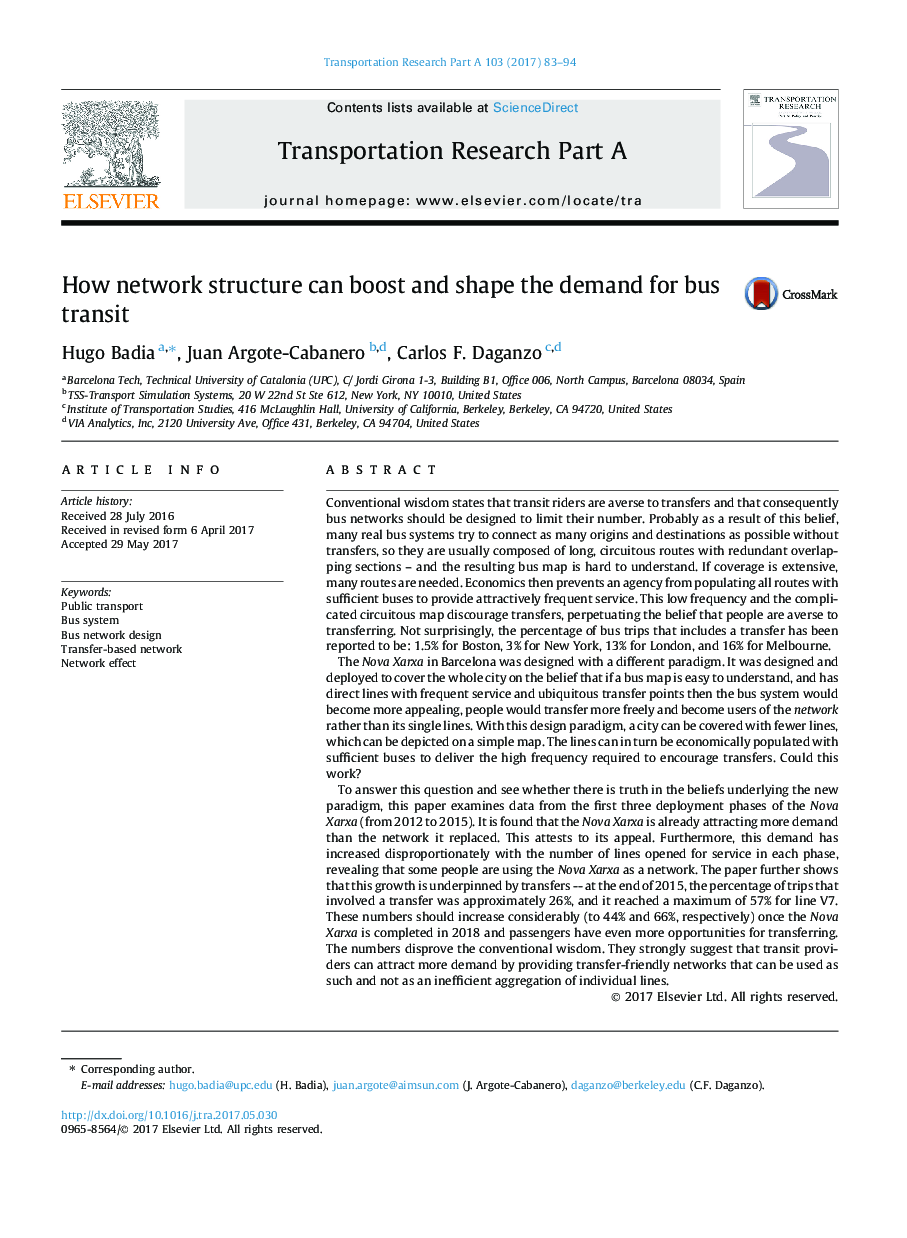| Article ID | Journal | Published Year | Pages | File Type |
|---|---|---|---|---|
| 4928908 | Transportation Research Part A: Policy and Practice | 2017 | 12 Pages |
Abstract
To answer this question and see whether there is truth in the beliefs underlying the new paradigm, this paper examines data from the first three deployment phases of the Nova Xarxa (from 2012 to 2015). It is found that the Nova Xarxa is already attracting more demand than the network it replaced. This attests to its appeal. Furthermore, this demand has increased disproportionately with the number of lines opened for service in each phase, revealing that some people are using the Nova Xarxa as a network. The paper further shows that this growth is underpinned by transfers -- at the end of 2015, the percentage of trips that involved a transfer was approximately 26%, and it reached a maximum of 57% for line V7. These numbers should increase considerably (to 44% and 66%, respectively) once the Nova Xarxa is completed in 2018 and passengers have even more opportunities for transferring. The numbers disprove the conventional wisdom. They strongly suggest that transit providers can attract more demand by providing transfer-friendly networks that can be used as such and not as an inefficient aggregation of individual lines.
Related Topics
Physical Sciences and Engineering
Engineering
Civil and Structural Engineering
Authors
Hugo Badia, Juan Argote-Cabanero, Carlos F. Daganzo,
